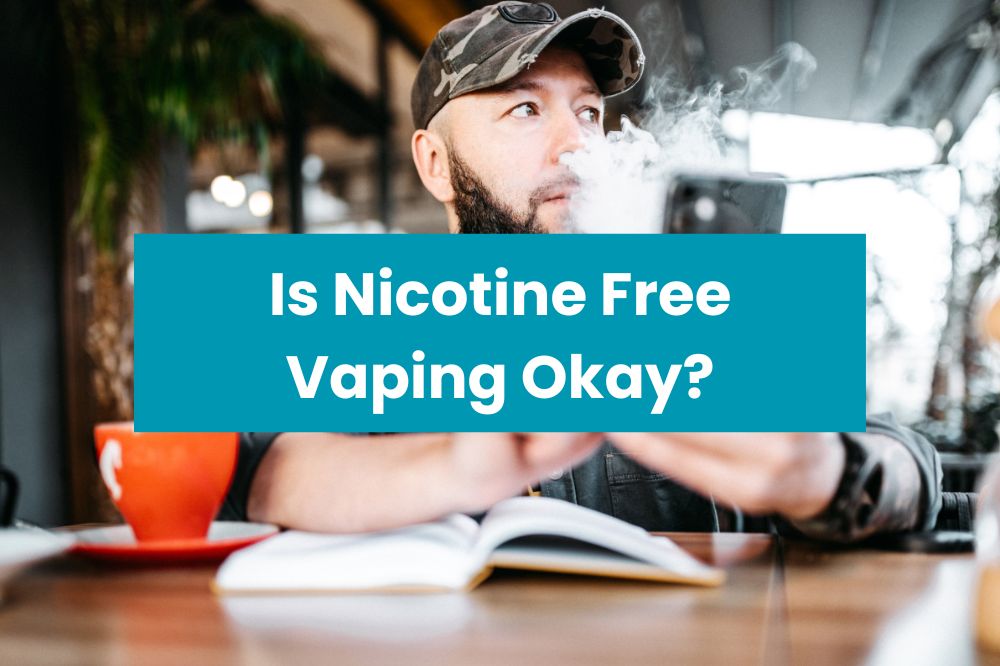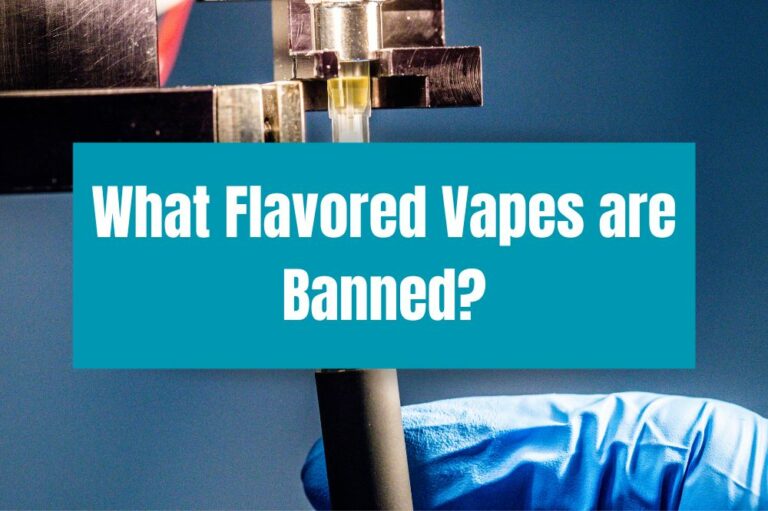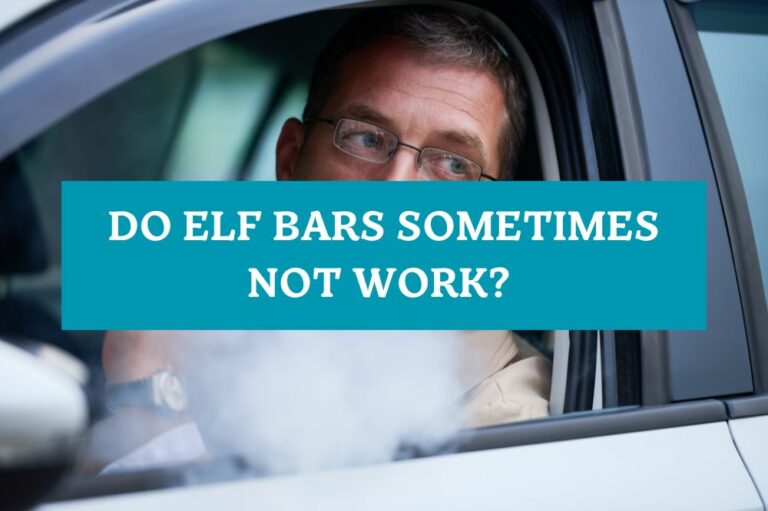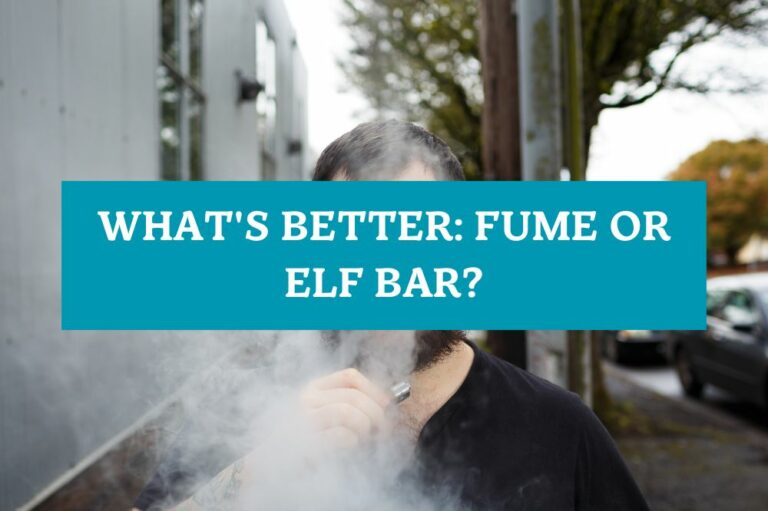Is Nicotine Free Vaping Okay?

If you’re a vaper who is trying to quit smoking or just looking for a new hobby, you may be wondering if nicotine-free vaping is a safe alternative. While vaping without nicotine can eliminate the risk of nicotine dependence, it’s important to understand that there may still be side effects associated with vaping.
One potential side effect of nicotine-free vaping is an immune system response. According to a 2018 study, exposure to nicotine-free vaping can cause an inflammatory response in immune system cells. This means that even if you’re not inhaling nicotine, your body may still react negatively to the chemicals in e-cigarette vapor.
However, there are also some benefits to vaping without nicotine. For example, it can be a way to satisfy a sweet tooth without consuming excess calories. Additionally, many people find that vaping can help them relax and unwind, without the harmful effects of smoking or the addictive properties of nicotine. Ultimately, the decision to vape without nicotine is a personal one that should be based on your own health goals and preferences.
Understanding Vaping
What is Vaping?
Vaping is the act of inhaling and exhaling vapor produced by an electronic cigarette or similar device. The device heats up a liquid, also known as e-juice or vape juice, which usually contains nicotine, flavorings, and other chemicals. The user then inhales the vapor, which is often mistaken for smoke.
SPIRITBAR Katana BP10000
- Slender, leather-textured body reminiscent of a katana handle for an authentic samurai feel
- Unique samurai-inspired e-liquid flavor - fruity yet not too sweet, with a luxurious, elegant aroma
- Powerful 650mAh rechargeable battery for extended vaping time
- Large 18ml e-liquid capacity and 10,000 puff capacity
- Advanced mesh coil and e-liquid & power display screens for optimal vaping experience
The special juice captures the essence of the samurai spirit with its rich, smoothly pulsating flavor that brings new satisfaction with every puff. The device's slender, leather-textured design evokes the grip of a samurai's katana, making this product a perfect choice for beginner vapors.
Nicotine-Free Vaping
Nicotine-free vaping is an alternative option for those who want to enjoy the experience of vaping without the addictive substance. It involves using e-juice that does not contain nicotine. While it is true that vaping without nicotine can be less harmful than smoking or vaping with nicotine, it is important to note that it is not completely harmless.
One potential issue with nicotine-free vaping is that it can still cause side effects. For example, some studies have shown that even nicotine-free e-cigarettes can trigger an immune system response, causing inflammation in immune system cells. Additionally, without the presence of nicotine, users may end up consuming more vape juice, which can be costly and potentially harmful to their health.
Overall, while nicotine-free vaping may be a better option than smoking or vaping with nicotine, it is still important to understand the potential risks and side effects associated with it. It is always a good idea to consult with a healthcare professional before starting any new habit or making any changes to your current routine.
SPIRITBAR Jack’s Flask 9000 Puffs
- Stylish pirate flask-shaped body providing an exciting vaping experience
- Delivering up to 9000 puffs per device
- 20ml e-liquid capacity with 50mg nicotine strength for satisfying throat hit
- Specialized pirate-themed e-juice flavors for rich, swirling taste
- Premium mesh coil optimizes flavor profile for maximum vaping enjoyment
This disposable vape captures the daring spirit of the high seas with its flask styling and signature pirate e-juice flavors. The extraordinary battery life provides 9000 indulgent puffs for extended vaping pleasure. Live boldly and freely with the Jack's Flask - a legendary vaping experience fit for a pirate's adventures.
Health Implications
If you’re considering vaping without nicotine, it’s important to understand the potential health implications. While nicotine-free vaping is generally considered safer than smoking traditional cigarettes, it’s not without risks.
Physical Health Effects
One of the primary concerns with vaping is the impact it can have on your respiratory system. Vaping involves inhaling a liquid that is heated and turned into a vapor, which can irritate your lungs and airways. This can lead to coughing, wheezing, and shortness of breath.
In addition, some studies have suggested that vaping can cause damage to your heart and blood vessels. Vaping has been shown to raise your blood pressure and increase your heart rate, which can put added strain on your cardiovascular system. This can increase your risk of heart attack and stroke.
Mental Health Effects
While the physical health effects of vaping without nicotine are a concern, it’s also important to consider the potential mental health effects. Vaping has been linked to increased anxiety and depression, particularly among young people.
In addition, the addictive nature of vaping can be a concern. While nicotine-free vaping may not be as addictive as traditional cigarettes, it can still be habit-forming. This can make it difficult to quit vaping once you start.
Overall, if you’re considering vaping without nicotine, it’s important to understand the potential health implications. While it may be a safer alternative to smoking traditional cigarettes, it’s not without risks. Be sure to talk to your doctor if you have any concerns about the impact of vaping on your health.
SPIRITBAR Katana BP10000
- Slender, leather-textured body reminiscent of a katana handle for an authentic samurai feel
- Unique samurai-inspired e-liquid flavor - fruity yet not too sweet, with a luxurious, elegant aroma
- Powerful 650mAh rechargeable battery for extended vaping time
- Large 18ml e-liquid capacity and 10,000 puff capacity
- Advanced mesh coil and e-liquid & power display screens for optimal vaping experience
The special juice captures the essence of the samurai spirit with its rich, smoothly pulsating flavor that brings new satisfaction with every puff. The device's slender, leather-textured design evokes the grip of a samurai's katana, making this product a perfect choice for beginner vapors.
Comparing Vaping to Traditional Smoking
Nicotine Levels
Nicotine is the addictive substance found in traditional cigarettes, and it is also present in many e-cigarette liquids. However, it is important to note that not all e-liquids contain nicotine. In fact, there are many nicotine-free vaping options available on the market. If you are trying to quit smoking and are concerned about nicotine addiction, switching to nicotine-free vaping may be a good option for you.
Health Risks Comparison
While vaping has been touted as a safer alternative to smoking, it is important to note that it is not without its own risks. According to the American Heart Association, e-cigarettes still contain harmful chemicals that can damage your lungs and heart. Additionally, some studies have shown that vaping can lead to lung inflammation and respiratory problems.
However, when comparing vaping to traditional smoking, many experts agree that vaping is likely the safer option. Traditional cigarettes contain thousands of harmful chemicals, many of which are known to cause cancer. Vaping, on the other hand, does not involve burning tobacco, which is where many of these harmful chemicals are produced. Additionally, vaping does not produce secondhand smoke, which can be harmful to those around you.
Overall, while vaping is not without its own risks, it is generally considered to be a safer alternative to traditional smoking. If you are trying to quit smoking, switching to nicotine-free vaping may be a good option for you. However, it is important to remember that quitting smoking altogether is the best way to improve your health.
Public Perception and Legal Aspects
Public Opinion
The public perception of vaping without nicotine is mixed. While some people believe that vaping without nicotine is safe, others are skeptical. According to a survey conducted by the American Heart Association, 63% of adults believe that vaping without nicotine is less harmful than vaping with nicotine. However, the same survey found that only 13% of adults believe that vaping without nicotine is completely safe.
The reasons for this skepticism vary. Some people believe that the chemicals used in e-liquids, such as propylene glycol and vegetable glycerin, are harmful. Others are concerned about the potential for nicotine addiction, even when vaping without nicotine. Additionally, some people are worried about the lack of long-term studies on the effects of vaping without nicotine.
Legal Restrictions
The legal status of vaping without nicotine varies by country and state. In some places, it is completely legal, while in others, it is heavily regulated or even banned. For example, in Australia, it is illegal to sell or possess e-cigarettes that contain nicotine. However, it is legal to sell and use e-cigarettes that do not contain nicotine.
In the United States, the legal status of vaping without nicotine varies by state. Some states, such as California and Massachusetts, have banned the sale of all e-cigarettes, including those that do not contain nicotine. Other states, such as Florida and Texas, allow the sale of e-cigarettes without nicotine.
It is important to note that even in places where vaping without nicotine is legal, there may be restrictions on where it can be used. For example, many states and municipalities have banned vaping in public places, such as restaurants and bars.
Overall, while vaping without nicotine may be legal in some places, it is important to be aware of the legal restrictions in your area. Additionally, it is important to consider the potential health risks associated with vaping without nicotine and to make an informed decision about whether or not it is right for you.
Personal Considerations
When deciding whether or not to vape nicotine-free, there are a few personal considerations to keep in mind. Here are some factors to think about:
Why People Choose Nicotine-Free Vaping
Many people choose to vape without nicotine for various reasons. Some people want to quit smoking but still want the sensation of inhaling and exhaling vapor. Others may want to enjoy the flavors of vape juice without the addictive properties of nicotine. Additionally, some people may have health concerns related to nicotine or may not want to become dependent on it.
Potential Risks and Benefits
While vaping without nicotine may eliminate some of the risks associated with nicotine addiction, there are still potential risks and benefits to consider. Here are a few:
- Reduced Addiction Risk: Without nicotine, there is no risk of becoming addicted to it. This can be a significant benefit for those who want to avoid addiction-related health problems.
- Increased Flavor Consumption: Nicotine can affect your sense of taste, so vaping without it may allow you to enjoy flavors more fully.
- Potential for Increased Vaping: Without the barrier of nicotine, you may find yourself vaping more frequently or consuming more vape juice. This could potentially lead to increased costs and health risks associated with inhaling vapor.
Ultimately, the decision to vape without nicotine is a personal one that should take into account your individual needs and preferences. It’s important to weigh the potential benefits and risks before making a decision.








